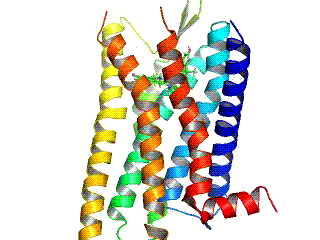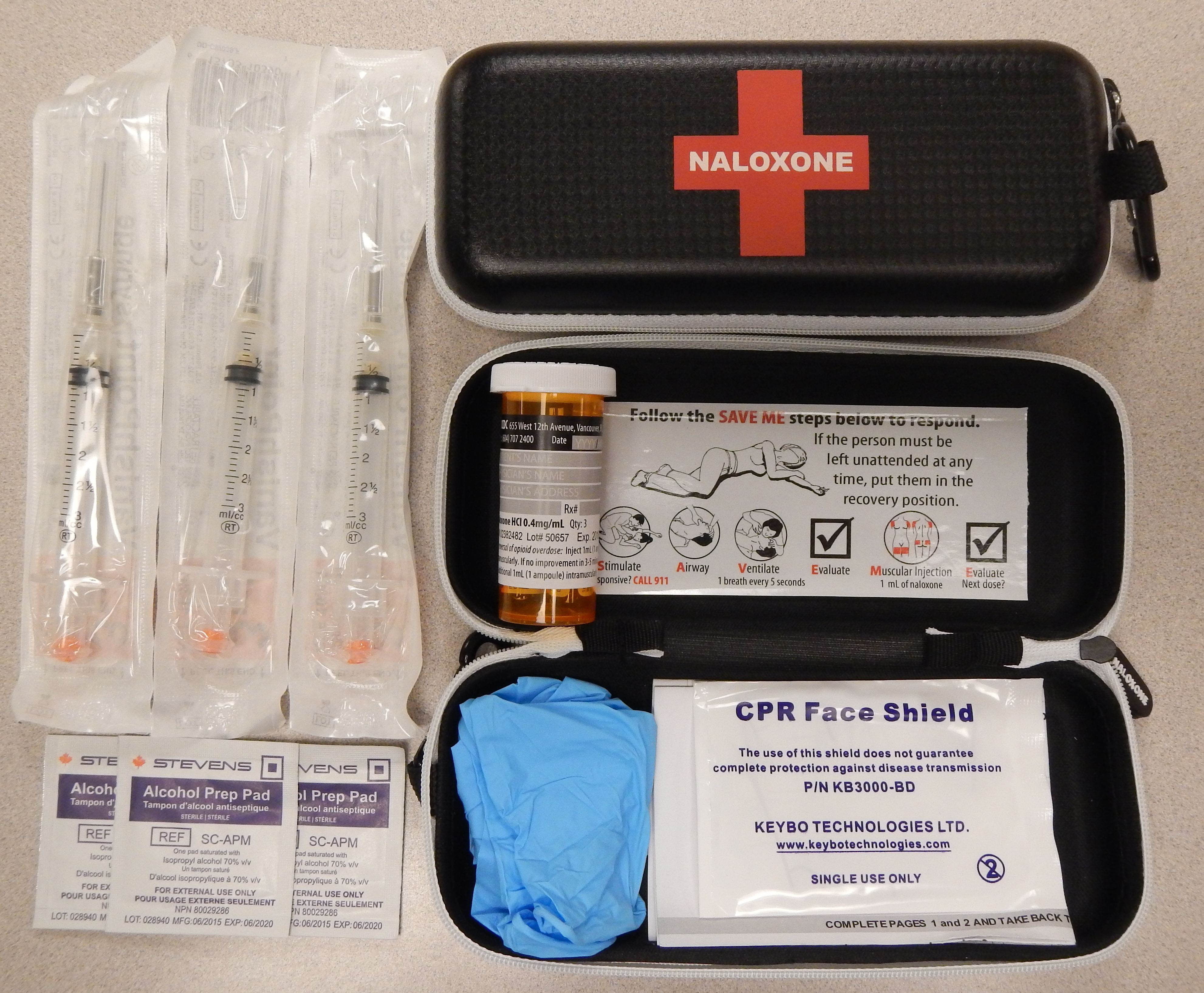|
Valorphin
Valorphin, also known as VV-hemorphin-5, is a naturally occurring, endogenous opioid heptapeptide of the hemorphin family with the amino acid sequence H-Val-Val-Tyr-Pro-Trp-Thr-Gln-OH (VVYPWTQ). It is produced in the body via proteolyic cleavage of residues 33-39 of the β-chain of hemoglobin. Valorphin binds preferentially to the μ-opioid receptor and produces effects such as analgesia and self-administration in animals. It also possesses cytotoxic and antiproliferative properties against tumor cells, the mediation of which, because they are reversed by naloxone, appears to be dependent on the opioid receptors. See also * Hemorphin Hemorphins are a class of naturally occurring, endogenous opioid peptides which are found in the bloodstream, and are derived from the β-chain of hemoglobin. They have antinociceptive effects via activation of the opioid receptors, and some may a ... References {{Opioidergics Opioid peptides ... [...More Info...] [...Related Items...] OR: [Wikipedia] [Google] [Baidu] |
Hemorphin
Hemorphins are a class of naturally occurring, endogenous opioid peptides which are found in the bloodstream, and are derived from the β-chain of hemoglobin. They have antinociceptive effects via activation of the opioid receptors, and some may also play a role in blood pressure through inhibition of the angiotensin-converting enzyme (ACE), as well as cause an elevation of endogenous enkephalin levels. Some examples of hemorphins include hemorphin-4, spinorphin, and valorphin. See also * Casomorphin Casomorphin is an opioid peptide (protein fragment) derived from the digestion of the milk protein casein. Health Digestive enzymes can break casein down into peptides that have some biological activity in cells and in laboratory animals though ... References {{Opioidergics Opioid peptides ... [...More Info...] [...Related Items...] OR: [Wikipedia] [Google] [Baidu] |
Opioid Peptide
Opioid peptides are peptides that bind to opioid receptors in the brain; opiates and opioids mimic the effect of these peptides. Such peptides may be produced by the body itself, for example endorphins. The effects of these peptides vary, but they all resemble those of opiates. Brain opioid peptide systems are known to play an important role in motivation, emotion, attachment behaviour, the response to stress and pain, control of food intake, and the rewarding effects of alcohol and nicotine. Opioid-like peptides may also be absorbed from partially digested food (casomorphins, exorphins, and rubiscolins). The opioid food peptides have lengths of typically 4–8 amino acids. The body's own opioids are generally much longer. Opioid peptides are released by post-translational proteolytic cleavage of precursor proteins. The precursors consist of the following components: a signal sequence that precedes a conserved region of about 50 residues; a variable-length region; and the ... [...More Info...] [...Related Items...] OR: [Wikipedia] [Google] [Baidu] |
Hemorphin
Hemorphins are a class of naturally occurring, endogenous opioid peptides which are found in the bloodstream, and are derived from the β-chain of hemoglobin. They have antinociceptive effects via activation of the opioid receptors, and some may also play a role in blood pressure through inhibition of the angiotensin-converting enzyme (ACE), as well as cause an elevation of endogenous enkephalin levels. Some examples of hemorphins include hemorphin-4, spinorphin, and valorphin. See also * Casomorphin Casomorphin is an opioid peptide (protein fragment) derived from the digestion of the milk protein casein. Health Digestive enzymes can break casein down into peptides that have some biological activity in cells and in laboratory animals though ... References {{Opioidergics Opioid peptides ... [...More Info...] [...Related Items...] OR: [Wikipedia] [Google] [Baidu] |
Self-administration
Self-administration is, in its medical sense, the process of a subject administering a pharmacological substance to themself. A clinical example of this is the subcutaneous "self-injection" of insulin by a diabetic patient. In animal experimentation, self-administration is a form of operant conditioning where the reward is a drug. This drug can be administered remotely through an implanted intravenous line or an intracerebroventricular injection. Self-administration of putatively addictive drugs is considered one of the most valid experimental models to investigate drug-seeking and drug-taking behavior. The higher the frequency with which a test animal emits the operant behavior, the more rewarding (and addictive), the test substance is considered. Self-administration of addictive drugs has been studied using humans, non-human primates, mice, invertebrates such as ants, and, most commonly, rats. Self-administration of heroin and cocaine is used to screen drugs for possible eff ... [...More Info...] [...Related Items...] OR: [Wikipedia] [Google] [Baidu] |
Opioid Receptor
Opioid receptors are a group of inhibitory G protein-coupled receptors with opioids as ligands. The endogenous opioids are dynorphins, enkephalins, endorphins, endomorphins and nociceptin. The opioid receptors are ~40% identical to somatostatin receptors (SSTRs). Opioid receptors are distributed widely in the brain, in the spinal cord, on peripheral neurons, and digestive tract. Discovery By the mid-1960s, it had become apparent from pharmacologic studies that opiate drugs were likely to exert their actions at specific receptor sites, and that there were likely to be multiple such sites. Early studies had indicated that opiates appeared to accumulate in the brain. The receptors were first identified as specific molecules through the use of binding studies, in which opiates that had been labeled with radioisotopes were found to bind to brain membrane homogenates. The first such study was published in 1971, using 3H-levorphanol. In 1973, Candace Pert and Solomon H. Snyder publis ... [...More Info...] [...Related Items...] OR: [Wikipedia] [Google] [Baidu] |
Naloxone
Naloxone, sold under the brand names Narcan (4 mg) and Kloxxado (8 mg) among others, is a medication used to reverse or reduce the effects of opioids. It is commonly used to counter decreased breathing in opioid overdose. Effects begin within two minutes when given intravenously, and within five minutes when injected into a muscle. The medicine can also be administered by spraying it into a person's nose. Naloxone commonly blocks the effects of opioids for 30 to 90 minutes. Multiple doses may be required, as the duration of action of some opioids is greater than that of naloxone. Administration to opioid-dependent individuals may cause symptoms of opioid withdrawal, including restlessness, agitation, nausea, vomiting, a fast heart rate, and sweating. To prevent this, small doses every few minutes can be given until the desired effect is reached. In those with previous heart disease or taking medications that negatively affect the heart, further heart problems have occurred. ... [...More Info...] [...Related Items...] OR: [Wikipedia] [Google] [Baidu] |
Cell (biology)
The cell is the basic structural and functional unit of life forms. Every cell consists of a cytoplasm enclosed within a membrane, and contains many biomolecules such as proteins, DNA and RNA, as well as many small molecules of nutrients and metabolites.Cell Movements and the Shaping of the Vertebrate Body in Chapter 21 of Molecular Biology of the Cell '' fourth edition, edited by Bruce Alberts (2002) published by Garland Science. The Alberts text discusses how the "cellular building blocks" move to shape developing embryos. It is also common to describe small molecules such as ... [...More Info...] [...Related Items...] OR: [Wikipedia] [Google] [Baidu] |
Tumor
A neoplasm () is a type of abnormal and excessive growth of tissue. The process that occurs to form or produce a neoplasm is called neoplasia. The growth of a neoplasm is uncoordinated with that of the normal surrounding tissue, and persists in growing abnormally, even if the original trigger is removed. This abnormal growth usually forms a mass, when it may be called a tumor. ICD-10 classifies neoplasms into four main groups: benign neoplasms, in situ neoplasms, malignant neoplasms, and neoplasms of uncertain or unknown behavior. Malignant neoplasms are also simply known as cancers and are the focus of oncology. Prior to the abnormal growth of tissue, as neoplasia, cells often undergo an abnormal pattern of growth, such as metaplasia or dysplasia. However, metaplasia or dysplasia does not always progress to neoplasia and can occur in other conditions as well. The word is from Ancient Greek 'new' and 'formation, creation'. Types A neoplasm can be benign, potentially m ... [...More Info...] [...Related Items...] OR: [Wikipedia] [Google] [Baidu] |
Antiproliferative
Cytostasis (cyto – cell; stasis – stoppage) is the inhibition of cell growth and multiplication. Cytostatic refers to a cellular component or medicine that inhibits cell division. Cytostasis is an important prerequisite for structured multicellular organisms. Without regulation of cell growth and division only unorganized heaps of cells would be possible. Chemotherapy of cancer, treatment of skin diseases and treatment of infections are common use cases of cytostatic drugs. Active hygienic products generally contain cytostatic substances. Cytostatic mechanisms and drugs generally occur together with cytotoxic ones. Activators Nitric oxide – activated macrophages produce large amounts of nitric oxide (NO), which induces both cytostasis and cytotoxicity to tumor cells both ''in vitro'' and ''in vivo''. Nitric oxide-induced cytostasis targets ribonucleotide reductase by rapid and reversible inhibition. However, other studies show there could be other targets that are res ... [...More Info...] [...Related Items...] OR: [Wikipedia] [Google] [Baidu] |
Cytotoxic
Cytotoxicity is the quality of being toxic to cells. Examples of toxic agents are an immune cell or some types of venom, e.g. from the puff adder (''Bitis arietans'') or brown recluse spider (''Loxosceles reclusa''). Cell physiology Treating cells with the cytotoxic compound can result in a variety of cell fates. The cells may undergo necrosis, in which they lose membrane integrity and die rapidly as a result of cell lysis. The cells can stop actively growing and dividing (a decrease in cell viability), or the cells can activate a genetic program of controlled cell death (apoptosis). Cells undergoing necrosis typically exhibit rapid swelling, lose membrane integrity, shut down metabolism, and release their contents into the environment. Cells that undergo rapid necrosis in vitro do not have sufficient time or energy to activate apoptotic machinery and will not express apoptotic markers. Apoptosis is characterized by well defined cytological and molecular events including a change i ... [...More Info...] [...Related Items...] OR: [Wikipedia] [Google] [Baidu] |
Natural Product
A natural product is a natural compound or substance produced by a living organism—that is, found in nature. In the broadest sense, natural products include any substance produced by life. Natural products can also be prepared by chemical synthesis (both semisynthesis and total synthesis) and have played a central role in the development of the field of organic chemistry by providing challenging synthetic targets. The term natural product has also been extended for commercial purposes to refer to cosmetics, dietary supplements, and foods produced from natural sources without added artificial ingredients. Within the field of organic chemistry, the definition of natural products is usually restricted to organic compounds isolated from natural sources that are produced by the pathways of primary or secondary metabolism. Within the field of medicinal chemistry, the definition is often further restricted to secondary metabolites. Secondary metabolites (or specialized metabolites ... [...More Info...] [...Related Items...] OR: [Wikipedia] [Google] [Baidu] |
Analgesia
Pain management is an aspect of medicine and health care involving relief of pain (pain relief, analgesia, pain control) in various dimensions, from acute and simple to chronic and challenging. Most physicians and other health professionals provide some pain control in the normal course of their practice, and for the more complex instances of pain, they also call on additional help from a specific medical specialty devoted to pain, which is called pain medicine. Pain management often uses a multidisciplinary approach for easing the suffering and improving the quality of life of anyone experiencing pain, whether acute pain or chronic pain. Relief of pain in general (analgesia) is often an acute affair, whereas managing chronic pain requires additional dimensions. The typical pain management team includes medical practitioners, pharmacists, clinical psychologists, physiotherapists, occupational therapists, recreational therapists, physician assistants, nurses, and dentist ... [...More Info...] [...Related Items...] OR: [Wikipedia] [Google] [Baidu] |




